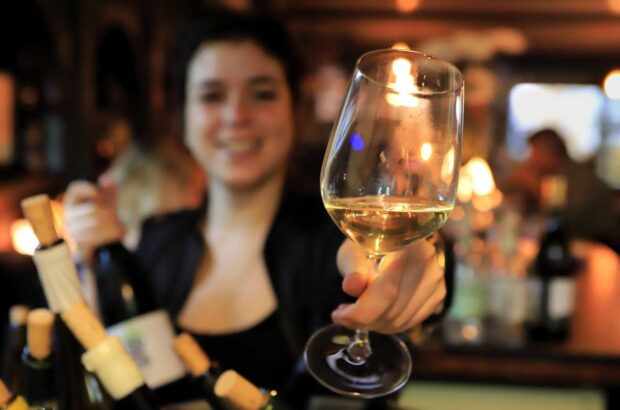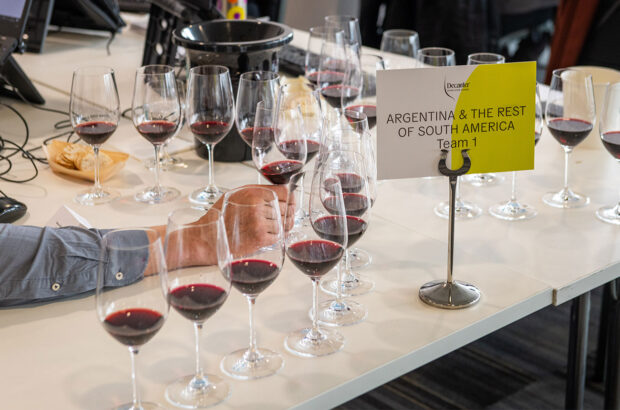It was a spot of bedtime reading that did it. Desperately seeking a research topic to finish the Master of Wine course, a chapter in Don and Petie Kladstrup’s Champagne mentioned the 1911 riots: Champagne houses were razed by angry growers, the sabre-wielding French army charged down the streets of Epernay, and one of the biggest reasons for the discontent? Wine fraud. This was something I could get into. With my journalistic juices flowing, a scratch of the surface revealed a paucity of research, particularly in English. With a degree in history and politics, and less-than-perfect French, my path was set. Following the indictment of Rudy Kurniawan, public interest in fakery had never been greater, and as I would find out after receiving my Master of Wine certificate in 2015, my interest in the murkier side of wine had not yet been sated.
Here’s the thing: we have been intoxicated by wine’s image as a wholesome, natural product, grown in bucolic vineyards in rural idylls. It is seen as unadulterated and exudes a sense of authenticity, guaranteed by its connection with romantic locations from the rolling hills of Tuscany to the medieval charms of Saint-Emilion. But there has been an unsavoury side to wine for as long as it has been bought and sold.
Age-old deception
Wine fraud has its roots in money and has typically been committed by men seeking to mislead other men for their own financial gain. However, most foul play has fallen into the category of amelioration rather than health-endangering adulteration. For more than two millennia, makers and vendors have been interfering with fermented grape juice to make it taste better in the hope of achieving a higher price – or simply to be able to sell it at all. It is only very recently that wine has been able to survive long journeys without becoming undrinkable or age for more than a year or two before turning to vinegar. Before high-tech wineries came along with laboratories and computerised tanks, and temperature-controlled shipping containers carried wines across vast oceans, quality was decidedly patchy. Giving wine a makeover often made it more attractive to the final customer. Depending on your point of view, you could call it amelioration or adulteration, but without the historic addition of brandy to fortify the wines of Portugal’s Douro Valley, we wouldn’t have Port.

Rebecca Gibb MW
While there are fewer reasons to tinker illegally with wine today in a bid to make it drinkable, the face of wine fraud has changed with the emergence of so-called investment-grade wine. For anyone willing to try to pass off bogus bottles of Burgundy and Bordeaux in the era before Rudy Kurniawan was indicted (2014), it was a low-risk, high-reward crime; very few wealthy collectors knew they had been duped, and those who did were unlikely to admit it. The fine wine industry buried its head in the sand for far too long, failing to protect its customers against opportunist scammers. While there has been a lot of chatter, and now some action to nip fraud in the bud, there will always be somebody willing to give it a go – let’s face it, who really can declare the taste of a 1929 Bordeaux genuine or not? For the crafty individual, in both senses of the word, it’s tempting.
We are gripped by the wily ways of fraudsters – whether that’s the mastermind behind a Ponzi scheme, the unknown artists who passed off their work as old masters or the wine dealers selling Algerian red as prestigious Burgundy. This violation of trust for profit is endlessly compelling; stories of scammers’ fearlessness and guile have been glamourised by myriad books and documentaries, and there is a part of us that secretly wonders if we could get away with it too. It allows us to soak up the thrill of extreme human behaviour without leaving home.
The art of blending
But wine crime is subjective: in the 1930s, some long-time Burgundy drinkers were known to favour the doctored version of their Chambolle or Chambertin – a splash of deeply coloured, gutsy red from the Med would boost their puny Pinot and make for a more enjoyable drop. Did they feel duped or victimised by this creative blending? Not at all. Do you feel aggrieved that a Left Bank Bordeaux will typically contain Cabernet Sauvignon, Merlot and Cabernet Franc? I doubt it. Blending has long been part of the winemakers’ toolbox, and has been legitimised by lawmakers, vendors and wine experts who corroborate the practices of a place, and validated by appellation laws. Crime, of course, cannot exist without laws, and detailed wine legislation was largely non-existent until France implemented its appellation system in 1936. Wine was only legally defined in the late 19th century as the product of the fermentation of fresh grape juice – prior to that, there was nothing stopping creative innkeepers from creating their house ‘wine’ using cider, sugar, water, blueberries or whatever they had to hand.
Vintage Crime is a story about people, as much as it is about fermented grape juice. It is a story of the perpetrators and their accomplices, the victims and the crime fighters. It is a history of wine told chronologically through various frauds that have intrigued me personally. It includes some of the most well-known cases of fraud, from the Austrian antifreeze scandal and the Jefferson bottles to lesser-known cases like the 1911 Champagne riots and the 1973 Winegate scandal. It is not a history of every wine crime that has ever taken place – there are far too many to count – but as you make your way from ancient Rome via France, Italy and Austria to a courthouse in New York City, it will raise deep questions along the way: what counts as wine, why do we drink it, and what makes a wine truly authentic?

Vintage Crime: A short history of wine fraud by Rebecca Gibb was published in October 2023 (USA) and will be released in November 2023 (UK) by UC Press (RRP £25/$29.95). Pre-release copies can be purchased via Amazon UK







